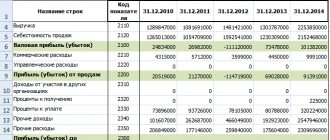Are you planning to organize a legal entity, but have not yet decided on the optimal form of the future organization? — Call our office by phone and our specialists will help you choose the best option for your situation.
Let's consider the most common organizational and legal forms of business entities:
Individual entrepreneur (IP)
An individual entrepreneur is a citizen engaged in business activities and registered in the prescribed manner with state registration authorities.
Minimum authorized capital : no.
Number of founders : one - the entrepreneur himself.
Management bodies : the entrepreneur himself.
Constituent documents : no.
Level of responsibility : a businessman is responsible for his obligations with personal property.
Public reporting : not required.
Purpose of activity : making a profit.
Distribution of profits : the entrepreneur disposes of profits at his own discretion.
Limited Liability Company (LLC)
A commercial organization whose authorized capital is formed by contributions from the founders.
Minimum authorized capital : 10,000 rubles.
Number of founders : At least one, no more than fifty.
Governing bodies : Council of Founders. Executive Director. Management can also be supplemented by such bodies as the supervisory board, audit commission and board of directors.
Constituent documents : charter.
Level of liability : The LLC is liable for its obligations with its property. Members of the company are not liable for its obligations. Their risk is limited by the size of their contributions to the LLC.
Public reporting : An LLC is not required to publish its operating results.
Purpose of activity : making a profit.
Profit distribution : proportional to shares in the authorized capital. The charter may provide for a different procedure for the distribution of profits.
Joint Stock Company (JSC)
A commercial organization whose authorized capital is formed from investments of shareholders.
Minimum authorized capital : from 100 minimum wages (minimum wage).
Number of founders : At least one. No more than fifty.
Governing bodies : General meeting of shareholders. Executive Director. Audit committee.
Constituent documents : Charter.
Level of liability : Shareholders are not liable for the obligations of the CJSC.
Public reporting : The company is not obliged to publish data on the results of its activities.
Purpose of activity : Making a profit.
Profit distribution : Shareholders receive profits in the form of dividends on shares.
Public joint stock company (PJSC)
It has the following differences from JSC:
- Larger authorized capital: from 1000 minimum wage;
- Unlimited number of shareholders;
- Obligation to publish an annual performance report.
S. Gavrilova, leading lawyer
Published in the Financial Newspaper. Regional issue", 2011, N 20
Its organization, the procedure for interaction with partners, and responsibility for obligations depend on the legal form of conducting a business.
A limited liability company (hereinafter referred to as LLC) is a business company (legal entity) created by one or several persons, the authorized capital of which is divided into shares; members of the company are not liable for its obligations and bear the risk of losses associated with the activities of the company, within the value of their shares in the authorized capital of the company (Article 2 of the Federal Law “On Limited Liability Companies” dated 02/08/1998 N 14-FZ (hereinafter referred to as – Law N 14-FZ)).
An individual entrepreneur (hereinafter referred to as an individual entrepreneur) is a citizen who is registered in the prescribed manner in this capacity and carries out entrepreneurial activities without forming a legal entity, i.e. independent, at your own risk, activity aimed at systematically obtaining profit from the use of property, sale of goods, performance of work or provision of services (Article 2, 23 of the Civil Code of the Russian Federation).
Both LLCs and individual entrepreneurs are subject to mandatory state registration and tax registration with extra-budgetary funds and the statistics agency. Registration in the funds of both individual entrepreneurs and LLCs is carried out automatically based on information from the Unified State Register of Legal Entities (USRIP), which is received by the funds at the time of state registration. In fact, an individual entrepreneur or LLC receives a notice of registration.
During state registration of both individual entrepreneurs and LLCs, the home address of the individual entrepreneur or the general director of the LLC can be used as a legal address. Meanwhile, a distinctive feature of an LLC is that it can be registered at the address of the rented (or own) premises where the executive body will be located, in any region of the country. State registration of an individual entrepreneur is carried out only at his place of residence.
The procedure for state registration of LLCs and individual entrepreneurs does not differ significantly in complexity. The main difference between these procedures is the list of documents submitted to the registration authority (Article 12, 22.1 of the Federal Law of 08.08.2001 N 129-FZ “On State Registration of Legal Entities and Individual Entrepreneurs” (hereinafter referred to as Law N 129-FZ) ), and according to the amount of the state duty for performing registration actions (for individual entrepreneurs the state duty is 800 rubles, for LLCs – 4000 rubles – Article 333.33 of the Tax Code of the Russian Federation). Registration periods are the same - no more than five working days from the date of submission of documents to the registration authority (Article 8 of Law No. 129-FZ).
Revenue
Revenue is the funds that a business entity receives for the sale of goods or services provided . Often this term refers to real money received by the seller and placed in the cash register.
When a buyer purchases products with deferred payment, then the money will arrive at the cash register a little later. In this case, income is taken into account upon enrollment. Money is considered credited from the moment the sales agreement is signed. Thus, the daily income increases by the full cost of the goods, and not by the amount of the credited advance.
In addition, revenue can be gross or net . The first includes the entire amount of funds received during payment. Net revenue involves the money remaining in the hands of the individual entrepreneur after paying taxes, excise taxes and duties.
Accounting for personal amounts in the account
Depositing money by an individual entrepreneur into his personal account is not considered revenue. After the operation, a cash receipt order is filled out, which indicates the purpose of the funds as not related to business income. When filling out a debit order, you must indicate the number of the current account to be replenished and the address of the banking institution.
Of great importance is the correct execution of documents indicating the source of receipt of money when depositing it with the bank. An individual entrepreneur has the right to deposit cash through a bank cash desk only into his own account.
If this rule is violated, the bank refuses to accept money. After the transaction has been completed, the entrepreneur receives from the cashier a receipt signed and stamped by the financial institution that accepted the payment in cash. After posting the money, an account statement is issued indicating the entire amount. If funds were deposited as your own, you should post them through the cash register using account 84.
If money is deposited into the account of an individual entrepreneur and it is received from the sale of goods, it is necessary to indicate their purpose in the PKO, registering it as revenue. All accounting entries must be documented. If an entrepreneur deposited his own money into an individual entrepreneur’s account in order to pay off a debt, it is displayed in 1C with the obligatory issuance of a cash receipt order. The total amount accepted is not subject to recording in the income and expenses ledger.
An individual entrepreneur does not always keep accounting records, but if the appropriate documents are available, they use entries Dt 50.1 Kt 76.78.66 (at their own choice). Sometimes it is convenient to use account 72 - income, expenses of an individual entrepreneur, 72.1 - investing personal funds, 72.2 - replenishing an account.
It is considered possible to use account 84, since the funds of an individual entrepreneur are understood as the entire totality of his expenses, both profits and losses.
Taking into account all the positive and negative aspects of drawing up cash documents in the process of work, the individual entrepreneur formalizes the receipt of funds with order No. Ko-1. If money is deposited into the cash register, an account is used for accounting that records work with creditors and debtors, as well as postings (Debit 76, Credit 50) indicating the receipt of money through the cash register. If the entrepreneur refuses to maintain accounting documentation, it is necessary to comply with clause 2 of Art. 6 of Law No. 402-FZ, concerning tax accounting of profits and expenses.
Tax payment system
When an entrepreneur uses the general system, he is required to pay certain taxes. For example: VAT and 13% personal income tax. It is also necessary to pay for the individual entrepreneur’s property, transport, and land resources. The simplified scheme includes filing the necessary declarations and paying tax according to the rates: 15% and 6% of income. Such a system has a number of advantages.
Under the simplified tax system, taxpayers' income is exempt from collection:
In addition, under the simplified tax system, tax is calculated subject to the presence of actual income. This rule does not apply if the entrepreneur is on OSNO. The collection is not made in case of business suspension and lack of income. For example, when trade or the provision of any services was stopped.
Using UTII per year, a businessman must pay tax at a rate of 15%. Imputed income is calculated according to the approximate revenue from a specific type of activity. The patent type includes payment of 6% of the amount of probable income for the year. The annual amount for a business located on UTII is calculated taking into account the specifics of the region and type of activity.
Since the tax when using UTII and a patent is calculated taking into account future income, it must be paid under any circumstances, even if the business stops during the reporting period . Timely contributions to the tax service and submission of quarterly and annual reports will avoid penalties or freezing of accounts.
On-site inspection
This is when the tax office comes to you personally to check whether you are acting within the law. Naturally, it is not carried out in a vacuum. Most often, the reason is some inconsistency in documents, unclear places in declarations, etc. Employee salaries that are too small or the fact that in several declarations in a row your expenses exceed your income may seem suspicious.
Such inspections usually occur no more often than once every 3 years. And Federal Tax Service employees can check your activities only for the last two years and the current period. The verification usually lasts no more than 2 months. But if your partners are suspected of tax evasion, the tax authorities may arrange a counter audit, and then all this may drag on for 30 months.
During an on-site inspection, you will be required to provide all documents, conduct an inventory, inspect the premises and interview witnesses. If tax officials suddenly come to you, and you are absolutely sure that you are acting according to the law, be sure to ask the employees for their identification and the decision to conduct an audit (this decision must be properly documented). Without these documents, you do not have the right to check anything, and you do not have to pay any fines.
Procedure for using profits
How to calculate the profit of an individual entrepreneur? Net profit can be calculated by determining the difference between income and expenses. At the same time, costs are all expenses of a businessman associated with running a business.
Some special tax regimes initially have a defined concept of income.
The distribution of IP profits occurs as follows:
- deductions of all necessary taxes are made;
- the remaining amount is used at the discretion of the company owner.
Sometimes a division of profits is required if several founders took part in organizing the business. The operation of withdrawing profits is not subject to tax again. An individual entrepreneur can take the required amount at any time and carry out expenditure transactions even daily. To do this, you do not need to complete any additional documents.
On video: Profit calculation
Enterprise profit distribution
The issue of paying dividends from previous years also remained controversial for a long time. Until 2002, the Ministry of Finance was of the opinion that the company did not have a legal obligation to distribute the profits of previous years, therefore the transaction on the distribution of income was void.
The concept of dividends is applicable to legal entities and, accordingly, taxation provided for by the provisions of the Tax Code is also applicable to legal entities.
The law does not require an individual entrepreneur to have any fixed amount to start a business; entrepreneurship does not officially require initial funds. But business always involves some costs, and you will definitely have to invest. The capital of an individual entrepreneur, however, remains at his discretion.
It follows that an individual entrepreneur is not a legal entity and does not form an authorized capital to carry out entrepreneurial activities.
Your income is taxed once depending on the regime: personal income tax, simplified tax system, PSN, UTII or Unified Agricultural Tax. You do not need to pay any additional taxes on the funds you withdraw from your account. There is no need to deposit funds withdrawn for personal needs into KUDiR, because this is not an expense.
The partnership is liable for its obligations with all its property. If the company's property is insufficient, the creditor has the right to make a claim against any general partner or all of them at once to fulfill the obligation.
Shareholders bear the risk of losses associated with the company's activities within the limits of the value of the shares they own.
Each set of documents is prepared strictly in accordance with the current legislation of the Russian Federation and, before being submitted to the Federal Tax Service for registration, undergoes a very high-quality check by a lawyer.
Expenses on material resources purchased for future use, or used for the manufacture of goods (performance of work, provision of services), not sold in the tax period, and also not fully used in the reporting tax period, are taken into account when receiving income from sales in subsequent tax periods.
The goal of any business activity is to make a profit. The totality of profit and interest received from its use forms the finances of the individual entrepreneur.
Withdrawal from current account
How to withdraw profit from a current account in a year?
There are two ways available to an individual entrepreneur to receive money:
- just cash out a certain amount. You can perform an expense transaction at any time using a checkbook. The receipt must indicate the withdrawal of profits or personal expenses;
- transfer the necessary funds from a business account to a personal account opened at any banking institution. In the purpose of payment it is appropriate to indicate: transfer to a personal card. The money received into the businessman’s personal account can already be used at your discretion.
When conducting debit transactions, banks charge additional fees. Their size depends on the tariffs of a particular financial institution. Often the fee for transferring to another account and for cashing out funds is different. In addition, banks may set restrictions on the amount of amounts indicated during debit transactions.
Individual entrepreneur money
An individual entrepreneur has the right to transfer money from a current account after paying taxes to his personal bank card and make transfers from it to other persons. And for the purposes of recognizing a businessman as low-income, his income is defined as the difference between the income received from business activities and the expenses associated with its implementation. Let's tell you in more detail.
Managing money in a current account
Current accounts are opened for individual entrepreneurs to carry out transactions related to business activities (clause 2.3 of Bank of Russia Instruction No. 153-I dated May 30, 2014 “On opening and closing bank accounts, deposit accounts, and deposit accounts”). According to Art. 128 and paragraph 2 of Art. 130 of the Civil Code of the Russian Federation, money is the object of civil rights and is recognized as property. The Constitutional Court of the Russian Federation, in Resolution No. 20-P dated December 17, 1996, explained that a citizen who is an individual entrepreneur uses his property not only to engage in business activities, but also as personal property necessary for the exercise of inalienable rights and freedoms. In this case, the citizen’s property is not legally demarcated. Thus, the funds in the entrepreneur’s current account are his personal property as an individual.
The owner has the right, at his own discretion, to dispose of the property belonging to him and to perform any actions with it that do not contradict the law and other legal acts and do not violate the rights and interests protected by law of other persons (Clause 2 of Article 209 of the Civil Code of the Russian Federation). Consequently, a businessman can withdraw money from the current account for personal needs or transfer it to his personal account. The Russian Ministry of Finance confirms this (letter dated April 19, 2016 No. 03-11-11/24221). The Bank of Russia, in letter No. 29-1-2/5603 dated August 2, 2012, also indicates that a businessman can spend money received from a current account for personal needs without any restrictions.
Please note that specialists from the financial department and tax authorities in their letters talk about the use by an entrepreneur for personal purposes of funds remaining in the current account after paying taxes (letter of the Ministry of Finance of Russia dated August 11, 2014 No. 03-04-05/39905, Federal Tax Service of Russia for the city of Moscow dated August 21, 2009 No. 20-14/2/ [email protected] ). But this does not mean that until a businessman has paid taxes, he cannot withdraw money from his current account for personal needs.
Current legislation does not provide for restrictions on the withdrawal of funds from an entrepreneur’s current account before taxes are paid. In accordance with paragraph 1 of Art. 845 of the Civil Code of the Russian Federation, the bank is obliged to carry out the client’s orders to issue the appropriate amounts from the account. At the same time, he does not have the right to determine and control the direction of use of the client’s funds and establish other restrictions on his right to dispose of funds at his own discretion not provided for by law or the bank account agreement (Clause 2 of Article 845 of the Civil Code of the Russian Federation).
Thus, a businessman at any time has the right to withdraw from his current account the amount of money he needs for personal consumption. And if a businessman miscalculated and did not have money by the deadline for paying taxes, he faces liability for non-payment (late payment) of taxes under Art. 122 of the Tax Code of the Russian Federation, and not for withdrawing funds before they are paid.
Income for social support
Now let’s look at the question of how the income of an individual entrepreneur is determined for the purposes of recognizing him as low-income and receiving social support.
The poor are considered to be a family (a citizen living alone) whose average per capita income is below the subsistence level established in the relevant constituent entity of the Russian Federation (Clause 1, Article 6 of the Federal Law of October 24, 1997 No. 134-FZ “On the subsistence level in the Russian Federation” ). The list of types of income taken into account when calculating average per capita income was approved by Decree of the Government of the Russian Federation dated August 20, 2003 No. 512. Subparagraph “g” of paragraph 1 of this list includes income from entrepreneurial activities.
The Ministry of Finance of Russia, in letter No. 03-11-10/1925 dated January 31, 2013, explained that in order to prescribe social support measures, the income of an individual entrepreneur using the simplified tax system should be calculated based on income from business activities, reduced by the amount of expenses associated with its receipt, and the amount of tax paid in connection with the application of this special regime. And in a letter dated July 29, 2016 No. 03-11-10/44552, specialists from the financial department clarified that for the above purpose, the income and expenses of a businessman are determined in relation to the explanations given in the order of the Ministry of Labor of Russia No. 703n, the Ministry of Finance of Russia No. 112n, the Ministry of Education and Science of Russia No. 1294 dated November 29, 2013 (hereinafter referred to as the Clarifications). These Clarifications relate to the calculation of the income of an individual entrepreneur for the purposes of withholding alimony.
According to the Explanations, the following documents are used to determine the income and expenses of a businessman who is on the simplified tax system:
- for income - a copy of the tax return submitted to the tax authority (subclause 1, clause 2 of the Explanations);
- for expenses (if the object of taxation is “income minus expenses”) - a book of income and expenses of organizations and individual entrepreneurs using the simplified tax system (subclause 3 of clause 3 of the Explanations);
- for expenses (if the object of taxation is “income”) - documents confirming, in accordance with the requirements of the tax legislation of the Russian Federation, expenses incurred related to the implementation of business activities (clause 5 of the Explanations). Please note that the requirements for such documents are contained in paragraph 1 of Art. 252 of the Tax Code of the Russian Federation. It says that the documents must be drawn up in accordance with the legislation of the Russian Federation or business customs applied in the foreign country in whose territory the expenses were incurred. In addition, these may be documents that indirectly confirm the incurrence of expenses.
Please note that only the costs listed in Art. 346.16 Tax Code of the Russian Federation. This is stated in sub. 3 p. 4 Explanations. And income is taken into account before taxes and fees are deducted in accordance with the legislation of the Russian Federation (Article 7 of the Federal Law of April 5, 2003 No. 44-FZ “On the procedure for recording income and calculating the average per capita income of a family and the income of a citizen living alone for recognizing them as low-income and providing them with state social assistance").
So, for the purposes of receiving social support, a businessman’s income is not considered the amount of funds received into the current account, but the difference between income from business activities and expenses associated with its implementation.
Reminder
A novice entrepreneur should calculate the profits and losses of an individual entrepreneur and weigh the profitability of a particular form of activity. Since having accounting books for individual entrepreneurship is currently not necessary, many have abandoned them. Thus, the exact amount of revenue is not controlled by each owner.
However, it is useful to calculate the income of an individual entrepreneur from an existing business. For example, if the activity concerns the service sector, you can calculate the approximate profit from one contract taking into account all expenses. For a company to be profitable, it is important to analyze all movements of funds at each stage of its development.
Is it possible to deposit funds into an individual entrepreneur's account?
Russian law does not prohibit the deposit of personal resources into a businessman’s account to be used for business purposes if revenue receipts are not planned in the near future.
Important! It is necessary to deposit money with the mark “own funds”, otherwise the proceeds will be taxed in accordance with the taxation system chosen by the individual entrepreneur.
An individual entrepreneur can replenish the account with personal money in cash or non-cash
A businessman can top up his account in cash or non-cash. The choice of bank and tariffs depends only on it.
Depositing money through a bank involves paying a commission at bank rates











